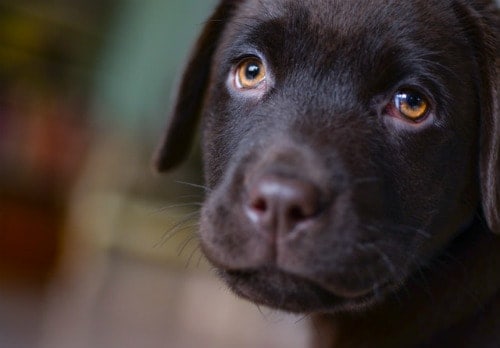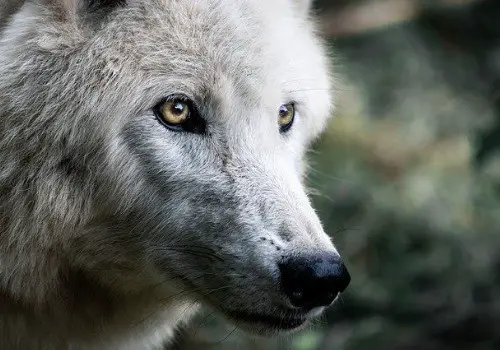Red, bloodshot eyes in dogs are often a symptom of conjunctivitis. Other accompanying symptoms include swelling, discharge and a cloudy look to the eye. A dog with conjunctivitis may blink or squint frequently in an effort to alleviate the pain or irritation. The dog may also paw at his eyes or rub his face on the carpet in order to seek relief from itching.
6 Things That Can Cause Conjunctivitis in Dogs:
Trauma
An injury to the surface of the eye or surrounding eye structures can lead to swelling and possible infection. Getting poked in the eye with a branch or foreign object is a common cause of eye trauma.
Irritants
Environmental factors like dirt, dust and cigarette smoke can leave behind debris in the eye that leads to irritation. Some wrinkly dogs and long-haired breeds may have chronic eye irritation from their own fur folding over into the eye.
Illness

Canine distemper is the most common cause of viral conjunctivitis in dogs. Bacterial infections of the eye can also occur especially as a secondary infection when the eye is damaged.
Eye Disease
Issues with the cornea and other eye problems such as cataracts and glaucoma can lead to eye swelling and irritation.
Parasites and Skin Diseases
Conditions that affect the skin around the eye can develop into conjunctivitis. Skin cancer, mange mites, and even heavy flea infestations could cause itching, and swelling around the eye.
Systemic Diseases and Allergies
Issues that cause a whole-body immune response in a dog can affect the eye. Food allergies, leptospirosis, Rocky Mountain spotted fever and other issues can lead to itchy eyes and infection.
A dog whose eyes are red and itchy may seek to relieve the itchiness by rubbing or scratching at the affected area. This can aggravate the problem by introducing germs to the area and causing trauma to the affected eye.
Left untreated, conjunctivitis can progress to a serious infection that can ultimately lead to the loss of vision. If your dog’s eyes are red, swollen or crusty with discharge, it’s important to seek treatment from a veterinarian right away rather than waiting for things to get worse.
What Is Cherry Eye in Dogs?
In addition to conjunctivitis, dogs can also experience an eye disorder often called “cherry eye.” This is a disorder of the dog’s third eyelid, more properly called the nictitating membrane.
The nictitating membrane is the meeting place of a number of glands in the eye. These glands are responsible for tear production and keeping the eye moist and protected from debris.
Most of the time, the animal’s third eyelid stays tucked away safely inside the fleshy outer lid. In a dog with cherry eye, however, a defect leads to the gland to prolapse or bulge from the visible part of the eye.
A dog with cherry eye will have a visible fleshy red or pink bulge in the corner of the eye. Abnormal tear production and fluid drainage from the eye are other common symptoms.

Cherry eye is common in most Spaniel breeds as well as many brachycephalic breeds and certain hounds. There is no genetic component to it, but the problem is most commonly seen in young dogs as the nictitating membrane will prolapse at an early age due to a malformation of the eye structure.
Fortunately, cherry eye can be treated with both surgical and non-surgical methods. Non-surgical treatments include steroids and closed-eye massage or physical manipulation. Surgical treatments are a more permanent solution. The goal of cherry eye surgery is to anchor the membrane to the orbital rim rather than remove it. This allows the dog’s third eyelid to function as intended.
What Is Eyelid Entropion in Dogs?
Entropion is an eye abnormality that can lead to painful infection and blindness if left untreated. It occurs most often in loose-skinned and wrinkled dog breeds, but any type of dog can develop an entropion eye.
Entropion occurs when the outer eyelid rolls inward, causing the eyelashes and fur on the surface of the lid to rub against the outer part of the eyeball. This can lead to corneal abrasions and scarring. The cornea can become infected as well due to the constant irritation.
Dogs with entropion may have one or both eyes affected. You may notice the dog squinting or frequently tearing up. However, many dogs don’t show any outward signs of discomfort until a more severe infection has taken hold.
Entropion eye must be corrected surgically. The treatment involves removing a portion of the eyelid in order to prevent the lid from rolling inward. In many cases, a veterinarian will choose to complete the procedure in two separate surgeries. This allows for a more conservative initial treatment and then a second corrective surgery if the first did not take enough skin. This prevents the problem of taking too much of the eyelid and leaving the dog with insufficient eye protection.
What Is Eyelid Ectropion in Dogs?

Some dogs have droopy faces, and the wrinkles and loose skin below the eye can pull the lower eyelid down. When this happens, you may notice the red interior of the eyelid and visible nictitating membrane.
This issue with the eye is called ectropion, and it can place a canine at risk of developing eye infection and injury.
The eyelid’s purpose is to protect the delicate structures of the eye and keep out debris. A drooping eyelid cannot do this job completely. The exposed cornea can develop infection or become dried out due to insufficient tear production.
Dogs with loose skin on the face are most likely to develop an ectropion eye. Other issues such as facial nerve paralysis and neuromuscular disease can also cause this issue. In some cases, surgical over-correction of entropion eye can lead to ectropion.
Surgical correction of ectropion is possible, but it is often not necessary. A more conservative treatment of lubricating eye drops or ointments is often enough to keep the eye safe from damage.
Are Some Dogs More Prone to Eye Infections?
Certain Breeds Are More Likely to Experience Red Eye and Conjunctivitis:
- Brachycephalic breeds, or those that have flat faces and smooshed noses: These breeds include the Pug, Bulldog, Shih Tzu and Pekingese. Because they have short snouts and shallow faces, their eyes have a tendency to bulge. This makes them far more likely to get debris in their eyes or to sustain eye-related injuries.
- Wrinkly breeds: Shar Peis, Pugs, Bulldogs, Bloodhounds and other dog breeds with wrinkly faces can experience entropion (where the skin folds over and irritates the eye) and ectropion (where the lower lid droops and exposes the eye to infection).
- Long-haired breeds such as many terriers, Poodles, Maltese, and Sheepdogs: Long hair around the eyes can trap dirt and other irritants and lead to infection. Hair caught in the dog’s eye can also become irritating and lead to conjunctivitis.
- Old dogs: Older canines whose immune systems are already compromised by disease or other issues are more likely to develop infection and may be less capable of fighting off infection naturally.
If your dog is prone to eye injury or disease, it’s important to take extra care to protect his eyes and deal with any problems that arise as soon as possible.
